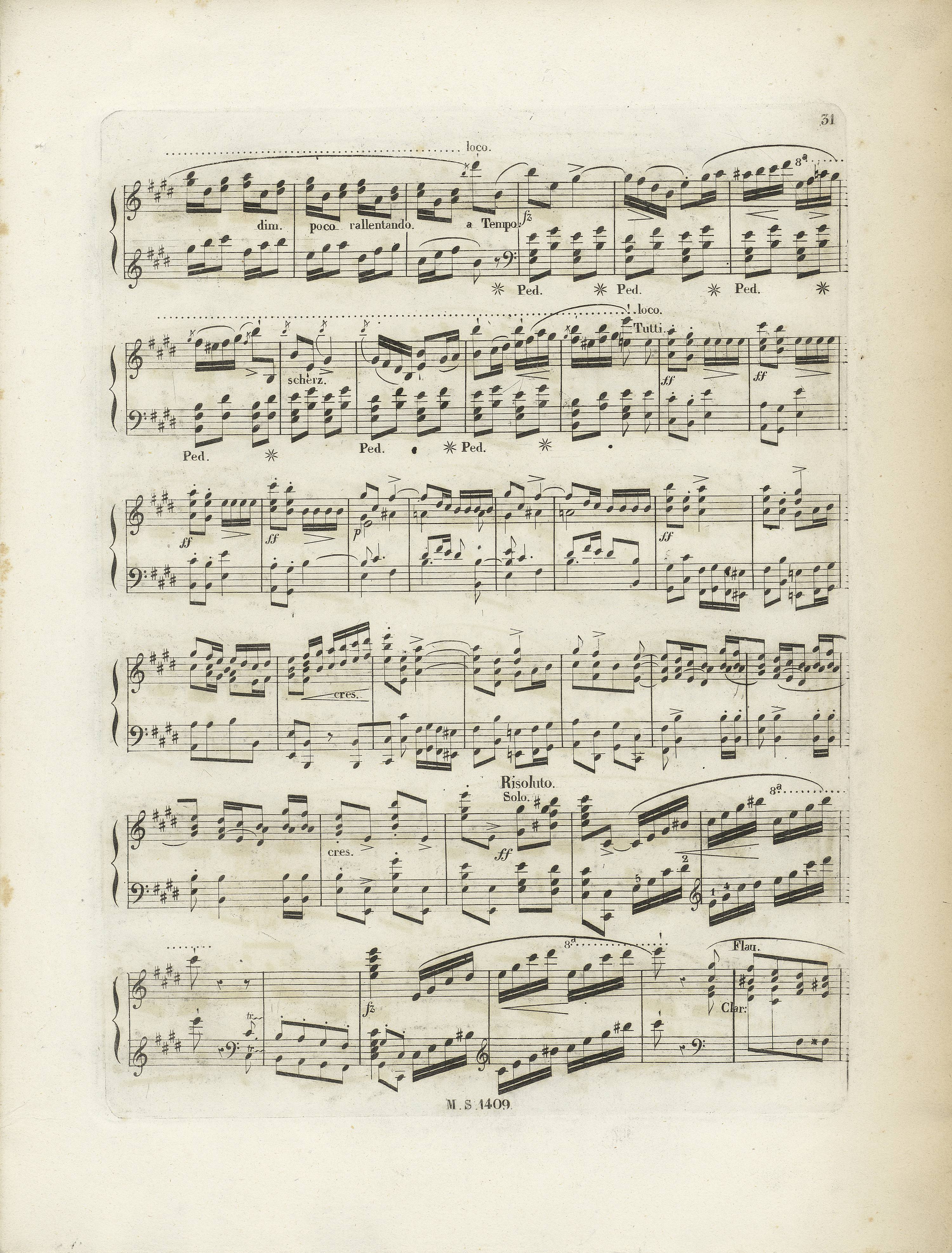Op. 2, Variations in B♭ major
Op. 10, 12 Etudes
Op. 11, Concerto in E minor
Op. 21, Concerto in F minor
Op. 22, Polonaise in E♭ major
Op. 24, 4 Mazurkas
Op. 25, 12 Etudes
Op. 26, 2 Polonaises
Op. 27, 2 Nocturnes
Op. 28, 24 Preludes
Op. 30, 4 Mazurkas
Op. 35, Sonata in B♭ minor
Op. 50, 3 Mazurkas
Op. 63, 3 Mazurkas
Op. 64, 3 Waltzes
(Op. 4), Sonata in C minor




Op. 11, Concerto in E minor, Mvt III
In FE (→GE1→GE2), the upper note of the last quaver in the L.H. is an erroneous f 1. What is more, the traces visible in FE prove that the note was introduced in the proofreading instead of the correct g
1. What is more, the traces visible in FE prove that the note was introduced in the proofreading instead of the correct g 1 (there is a visible trace of g
1 (there is a visible trace of g 1 on the 3rd ledger line, crossing the notehead, placed slightly too high; as a result, the mistake is inconspicuous). It is the 2nd quaver that provides an answer to the puzzle, in which the correct f
1 on the 3rd ledger line, crossing the notehead, placed slightly too high; as a result, the mistake is inconspicuous). It is the 2nd quaver that provides an answer to the puzzle, in which the correct f 1 was also proofread from g
1 was also proofread from g 1. Therefore, the engraver must have initially printed g
1. Therefore, the engraver must have initially printed g 1 in both places and then mistakenly changed both notes. The mistake was corrected in EE and GE3.
1 in both places and then mistakenly changed both notes. The mistake was corrected in EE and GE3.
Compare the passage in the sources »
category imprint: Interpretations within context; Differences between sources
issues: EE revisions, Errors resulting from corrections, GE revisions, Authentic corrections of FE, Errors repeated in GE
notation: Pitch

